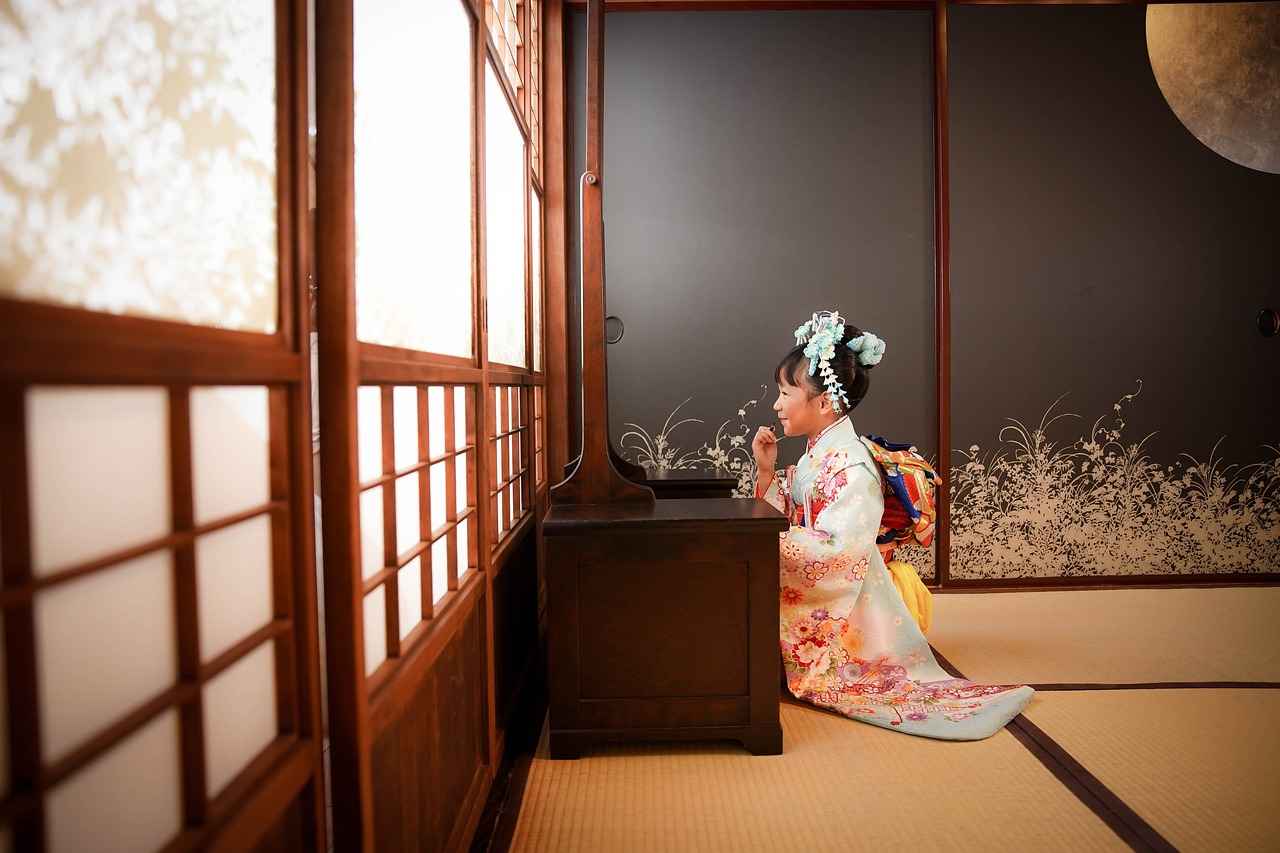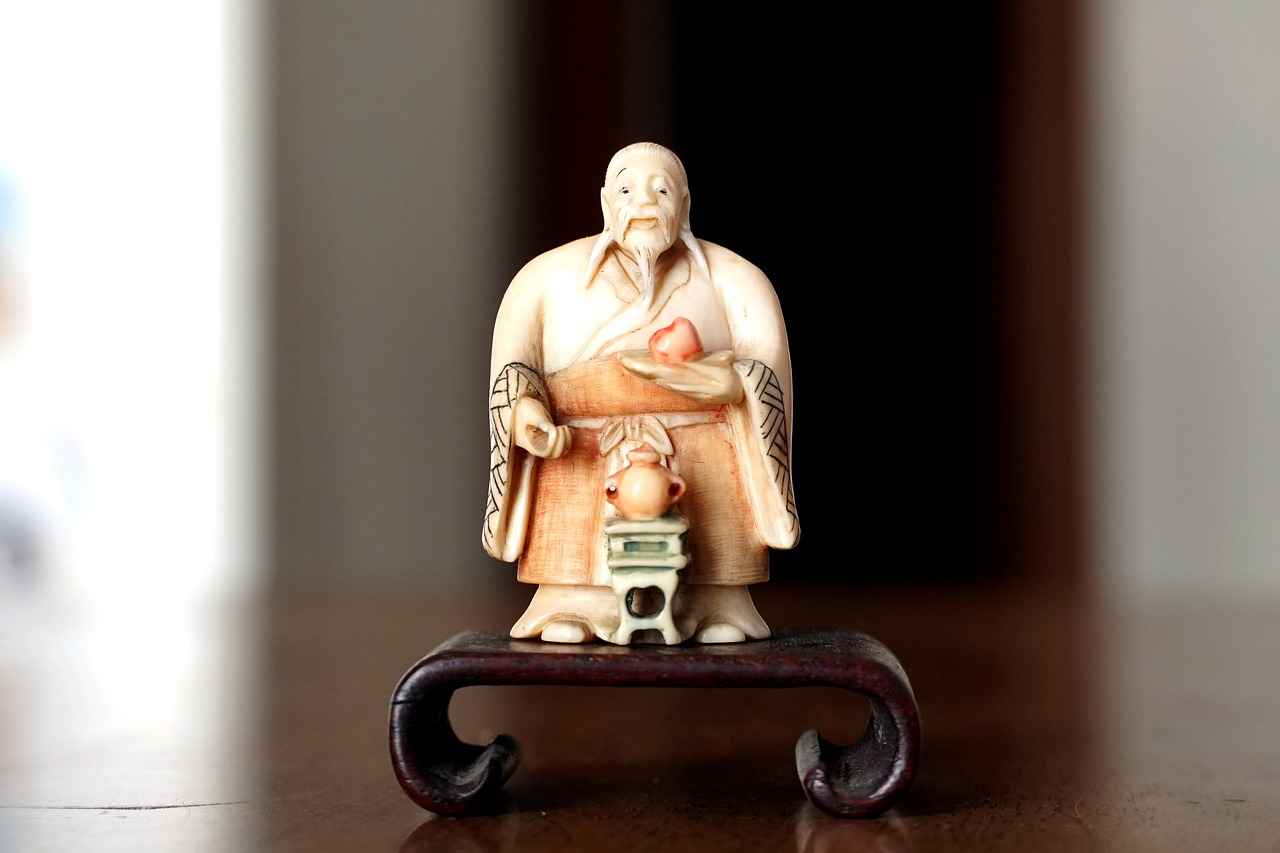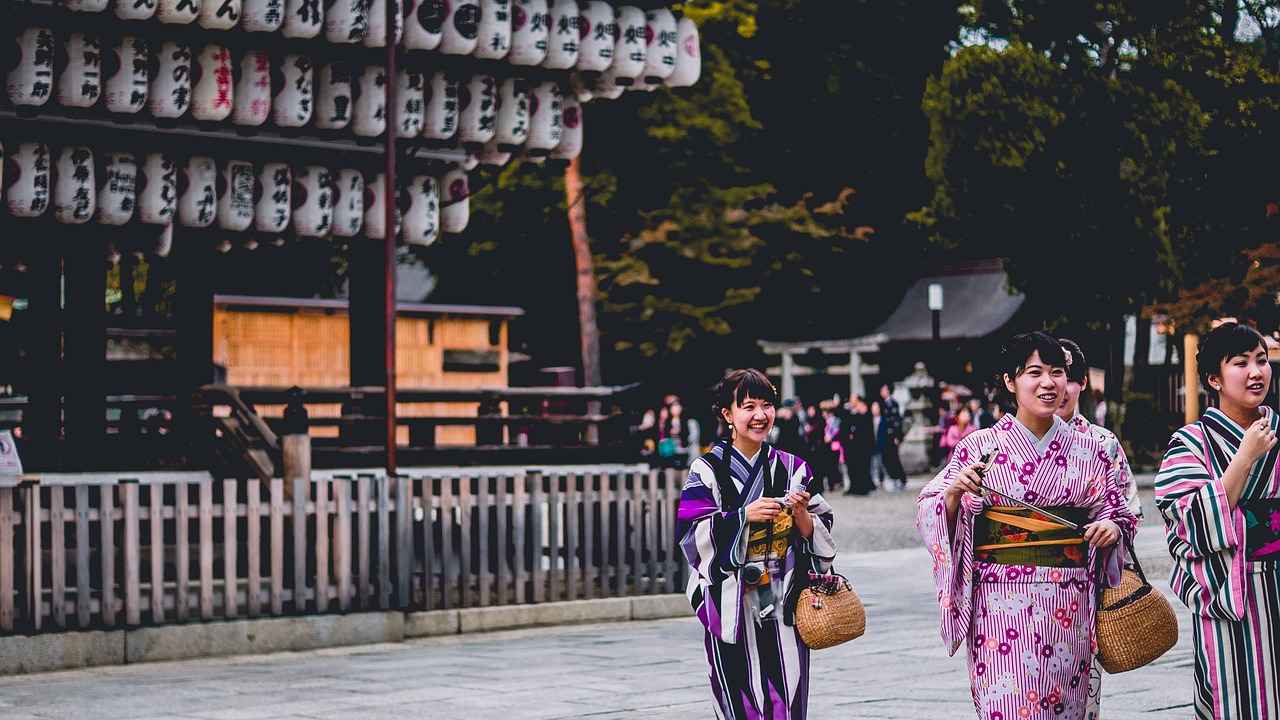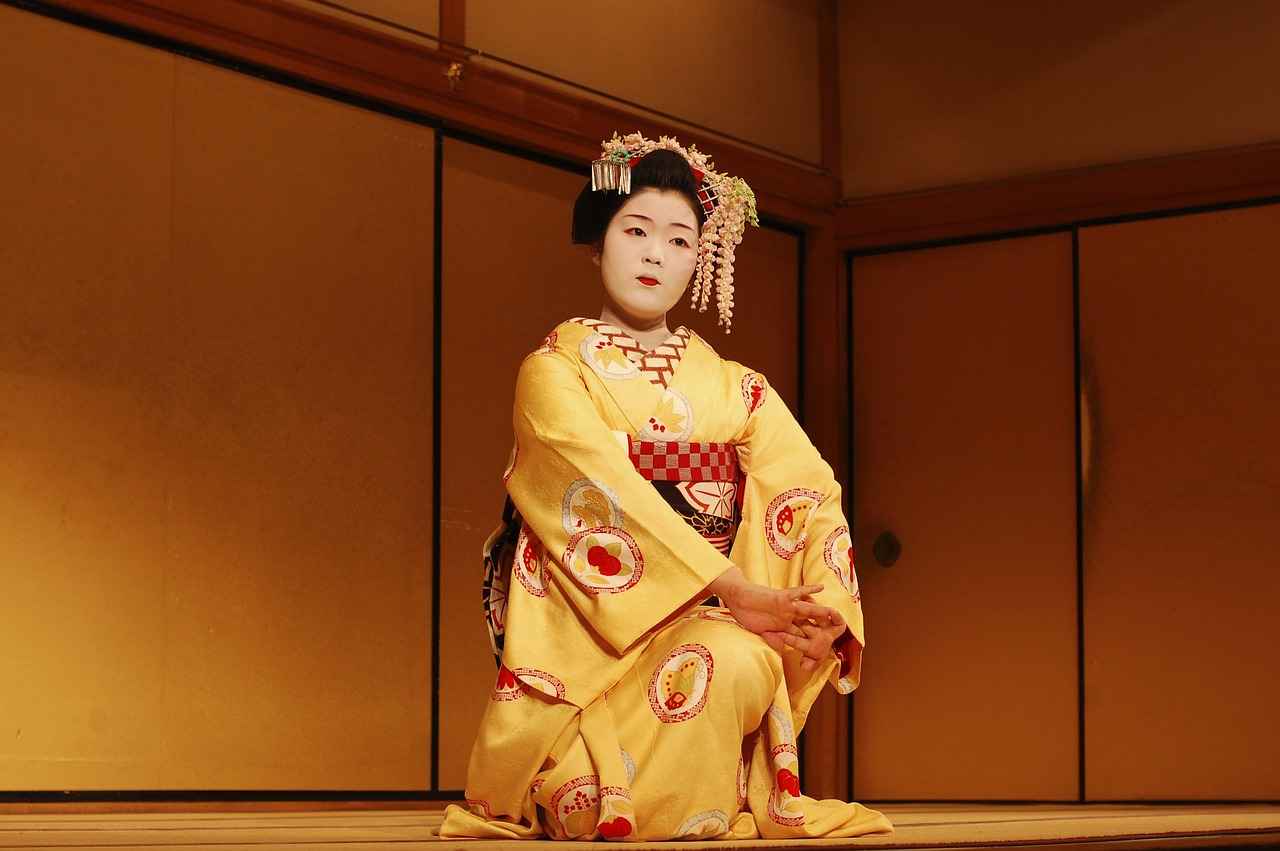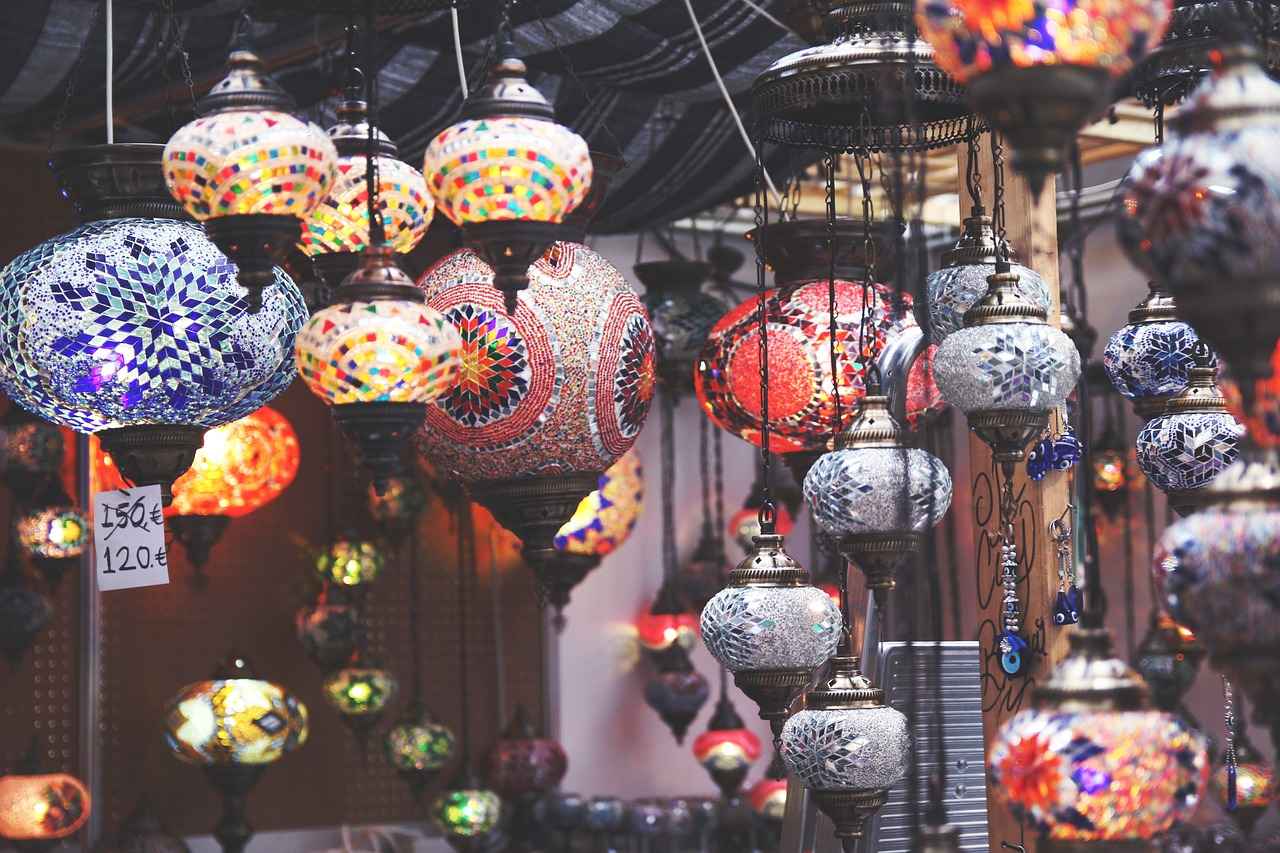This article delves into the distinctive qualities of kimono fabrics, exploring their rich history, intricate craftsmanship, and profound cultural significance. It highlights why these fabrics continue to be a cherished element of Japanese tradition.
The Rich History of Kimono Fabrics
Understanding the historical context of kimono fabrics reveals their evolution and significance in Japanese culture. These fabrics have undergone transformation over centuries, reflecting societal changes and artistic movements. From the Heian period’s elaborate designs to modern interpretations, kimono fabrics tell a story of heritage and identity.
Types of Kimono Fabrics
Kimono fabrics come in various types, each with unique characteristics:
- Silk: The traditional choice, known for its luxurious feel and vibrant colors.
- Cotton: Popular for casual wear, providing comfort and versatility.
- Synthetic Blends: Increasingly used for affordability and ease of care.
The Art of Kimono Dyeing
Dyeing techniques play a crucial role in creating the vibrant patterns found in kimono fabrics. Traditional methods, such as yuzen and shibori, allow for intricate designs that showcase the skill of artisans.
Cultural Significance of Kimono Fabrics
Kimono fabrics are not merely clothing; they embody cultural heritage and identity. Worn during ceremonies, festivals, and daily life, these garments serve as a connection to Japan’s past and a symbol of its rich traditions.
Modern Trends in Kimono Fabrics
The evolution of fashion has influenced kimono fabrics, leading to innovative designs and materials. Contemporary trends are reshaping traditional garments, making them accessible to younger generations while preserving their cultural essence.
Conclusion: The Timeless Appeal of Kimono Fabrics
In conclusion, kimono fabrics are a testament to Japan’s rich cultural heritage, blending tradition with modernity. Their unique qualities ensure they remain a beloved aspect of Japanese identity, cherished by both locals and global admirers.
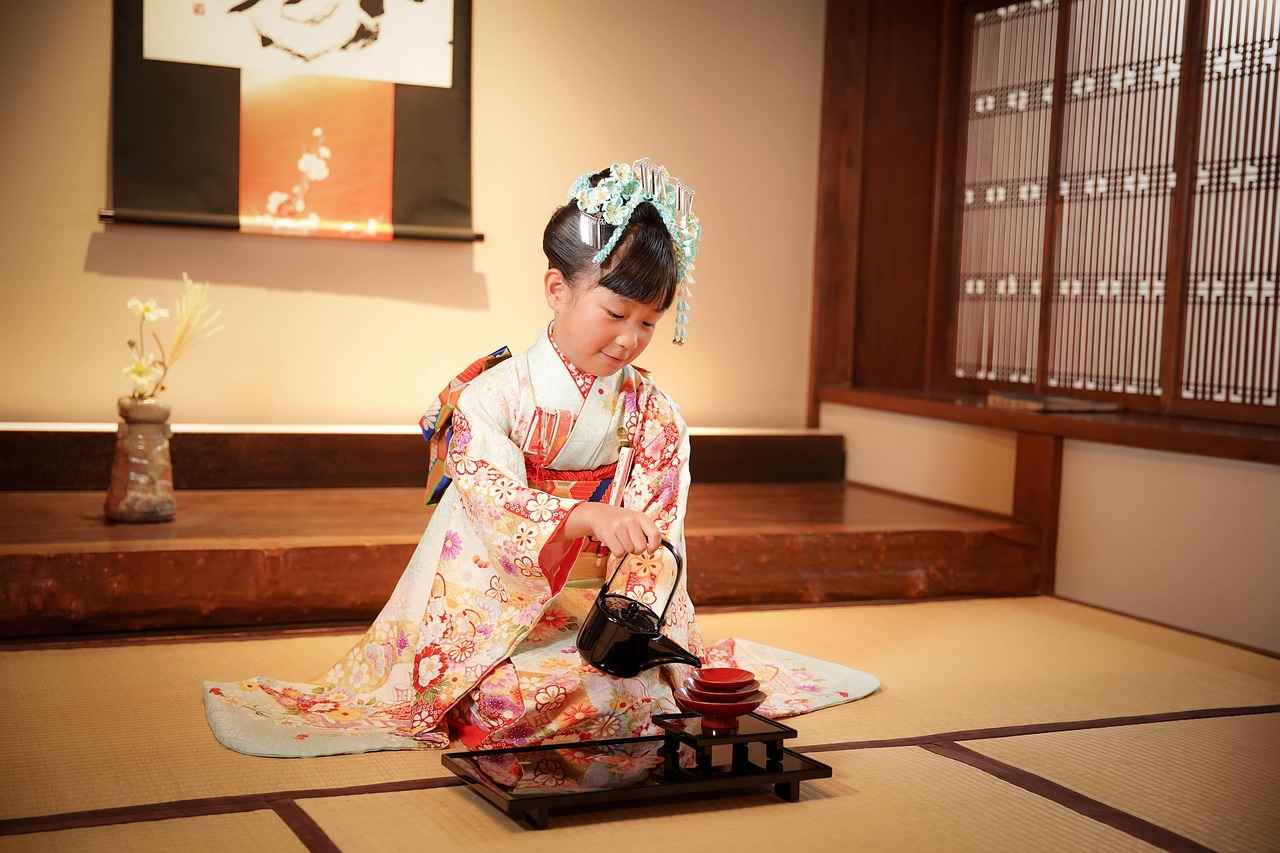
The Rich History of Kimono Fabrics
Understanding the historical context of kimono fabrics reveals their evolution and significance in Japanese culture. These fabrics have transformed over centuries, mirroring the changes in society, fashion, and artistry. Initially, kimono fabrics were made from natural materials, primarily silk, which was highly prized for its quality and beauty. The use of silk dates back to the Heian period (794-1185), when it was associated with the elite class, symbolizing status and wealth.
As Japan progressed through various historical eras, the production and use of kimono fabrics adapted to reflect societal shifts. During the Edo period (1603-1868), a flourishing of culture and commerce led to the democratization of kimono wearing. This era saw the introduction of vibrant colors and complex patterns, which were often inspired by nature and traditional Japanese art. The kimono became a canvas for artistic expression, with each fabric telling a story through its designs.
Moreover, the Meiji Restoration (1868) marked a significant turning point. As Japan opened its doors to the West, Western fashion began to influence traditional garments. However, instead of diminishing the significance of kimono fabrics, this interaction led to a fusion of styles. Today, while modern attire is prevalent, kimono fabrics remain a cherished part of Japanese heritage, often worn during special occasions and ceremonies.
In summary, the history of kimono fabrics is not merely about textiles; it is a reflection of Japan’s cultural evolution. From their origins in the elite circles to their place in contemporary society, these fabrics encapsulate the spirit of a nation, making them an enduring symbol of Japanese identity.
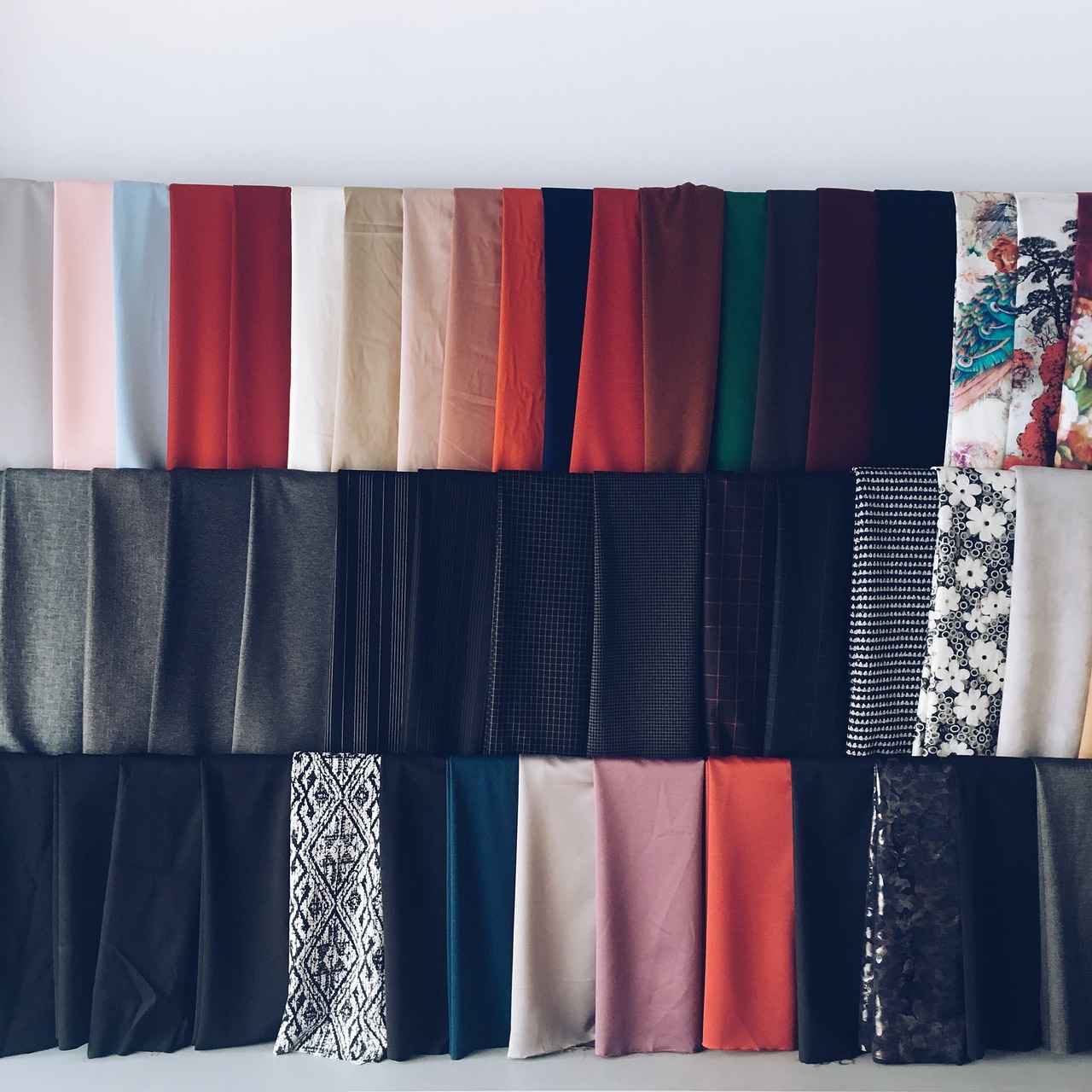
Types of Kimono Fabrics
are essential to understanding the intricate world of traditional Japanese attire. Each fabric type brings its own unique qualities, aesthetic appeal, and cultural significance, making the choice of fabric a vital aspect of kimono making.
Kimono fabrics can be categorized into three main types: silk, cotton, and synthetic blends. Below, we delve into these fabric types, highlighting their distinctive characteristics and uses.
| Fabric Type | Characteristics | Uses |
|---|---|---|
| Silk | Luxurious, soft, vibrant colors, and a natural sheen. | Formal kimonos and ceremonial attire. |
| Cotton | Durable, breathable, and easy to maintain. | Casual wear and summer kimonos. |
| Synthetic Blends | Cost-effective, versatile, and often mimics the look of natural fibers. | Everyday wear and modern fashion adaptations. |
Silk remains the most esteemed choice for kimono making, celebrated for its luxurious texture and vibrant colors. The production of silk involves intricate weaving techniques that contribute to its unique quality. Varieties such as habutae and chirimen are particularly favored for their specific characteristics, enhancing the overall elegance of the kimono.
Cotton, on the other hand, is increasingly popular for casual kimonos, especially during warmer months. Its breathable nature makes it a comfortable choice for everyday wear. Additionally, synthetic blends have entered the scene, offering a more affordable alternative while still maintaining aesthetic appeal.
In conclusion, the choice of fabric significantly influences the overall look and feel of a kimono. Understanding the different types of kimono fabrics allows wearers to appreciate the craftsmanship and cultural heritage embedded in each garment.
Silk: The Traditional Choice
Silk holds a special place in the art of kimono making, revered not only for its luxurious texture but also for its ability to showcase vibrant colors and intricate designs. This fabric has been a staple in Japanese culture for centuries, embodying both tradition and elegance. In this section, we will explore the production process of silk, its various types, and its significance in traditional attire.
The journey of silk begins with the silkworm, which spins cocoons that are harvested for their fibers. This meticulous process requires skilled artisans who ensure that the silk is of the highest quality. Once harvested, the cocoons are boiled to soften the fibers, allowing them to be unwound into long strands. These strands are then dyed using natural pigments, a process that enhances the fabric’s vibrancy and depth.
There are several varieties of silk used in kimono making, each with distinct characteristics. For instance, habutae silk is known for its smooth texture and lightweight feel, making it ideal for formal kimonos. On the other hand, chirimen silk has a crinkled texture that provides a unique aesthetic, often used for casual wear. Each type of silk contributes to the overall look and feel of the kimono, allowing wearers to express their individuality.
In addition to its aesthetic appeal, silk also plays a crucial role in the cultural significance of kimonos. Traditionally, kimonos made from silk are worn during important ceremonies and festivals, symbolizing status and respect within Japanese society. The choice of silk fabric can convey various messages, from celebration to mourning, reflecting the wearer’s intention and the occasion’s importance.
In conclusion, silk remains the traditional choice for kimono making due to its luxurious feel, vibrant colors, and rich cultural significance. Its production is a testament to the artistry and craftsmanship that define Japanese textile traditions, ensuring that silk kimonos continue to be cherished elements of Japanese heritage.
The Process of Silk Weaving
The art of silk weaving is a captivating blend of tradition, skill, and meticulous attention to detail. This intricate process not only produces a fabric of unparalleled beauty but also embodies the cultural heritage of regions renowned for their silk production. In this section, we will delve into the various techniques and stages involved in silk weaving, highlighting the craftsmanship that makes this fabric so unique.
- Silk Production: The journey begins with the cultivation of silkworms, primarily the Bombyx mori species. These worms feed on mulberry leaves, spinning cocoons made of long silk threads.
- Harvesting the Cocoons: Once the cocoons are formed, they are carefully harvested. This process requires precision to ensure that the delicate silk threads remain intact.
- Reeling the Silk: The harvested cocoons are then boiled to soften the sericin, a natural gum that holds the silk fibers together. After boiling, the silk threads are carefully unwound or “reeled” from the cocoon.
- Dyeing the Silk: The reeling process is followed by dyeing, where the silk threads are treated with vibrant colors using traditional methods. This step is crucial in achieving the rich hues and patterns characteristic of silk fabrics.
- Weaving Techniques: The dyed threads are then woven into fabric using various techniques, such as plain weave, satin weave, or twill weave. Each method contributes to the texture and appearance of the final product.
- Finishing Touches: After weaving, the fabric undergoes finishing processes, including washing, pressing, and sometimes additional dyeing to enhance its quality and luster.
Each stage of silk weaving requires expert craftsmanship, ensuring that the final product is not only beautiful but also durable. The combination of natural materials and skilled labor results in a fabric that has been cherished for centuries, making silk a timeless choice in fashion and textiles.
In conclusion, the process of silk weaving is a testament to the dedication and artistry of those who have perfected it over generations. This intricate craft continues to play a significant role in the creation of luxurious garments, particularly in traditional attire like kimonos, where the beauty and quality of silk are celebrated.
Silk Varieties Used in Kimonos
When it comes to the art of kimono making, the choice of fabric plays a pivotal role in defining the garment’s elegance and functionality. Among the various fabrics, silk stands out due to its luxurious texture and historical significance. Within the realm of silk, two notable varieties are habutae and chirimen, each possessing unique characteristics that cater to different styles and occasions.
| Silk Variety | Characteristics | Common Uses |
|---|---|---|
| Habutae | Soft, smooth, and lightweight with a subtle sheen. | Formal kimonos, ceremonial wear, and summer garments. |
| Chirimen | Textured with a crinkled appearance, providing a unique drape. | Casual kimonos, everyday wear, and stylish outfits. |
Habutae silk is renowned for its softness and lightweight nature, making it an ideal choice for formal occasions. The fabric’s subtle sheen adds a touch of elegance, enhancing the overall aesthetic of the kimono. It is often used in ceremonial kimonos, where a refined appearance is essential. Furthermore, habutae is favored in the warmer months due to its breathable quality, ensuring comfort during hot weather.
On the other hand, chirimen silk is distinguished by its unique crinkled texture, which not only adds visual interest but also contributes to its durability. This variety is commonly used in casual kimonos and everyday wear, appealing to a wider demographic. The textured surface of chirimen allows for greater flexibility in design, making it a popular choice among modern kimono designers.
In conclusion, the diversity of silk varieties such as habutae and chirimen showcases the intricate craftsmanship involved in kimono making. Each type of silk serves a specific purpose, reflecting the cultural heritage and artistic expression inherent in this traditional garment.
Cotton and Other Fabrics
Cotton and synthetic fabrics play a significant role in the world of kimono production, particularly in the realm of casual wear. This section explores the advantages of these fabrics and their rising popularity among various demographics.
Cotton is a natural fiber known for its breathability and comfort, making it an excellent choice for everyday wear. Unlike traditional silk, which can be expensive and require special care, cotton kimonos offer a more affordable and practical alternative. They are often favored by younger generations and those seeking a more relaxed style. Additionally, cotton’s durability ensures that these garments can withstand regular use, making them ideal for casual outings and festivals.
On the other hand, synthetic fabrics have gained traction in kimono production due to their versatility and ease of maintenance. Fabrics like polyester and rayon can mimic the look and feel of silk while being more resistant to wrinkles and stains. This quality makes them popular among busy individuals who appreciate the aesthetic of a kimono without the high maintenance associated with traditional materials.
The popularity of cotton and synthetic kimonos has also been bolstered by the growing trend of street fashion in Japan and beyond. Many fashion-forward individuals are incorporating these fabrics into their wardrobes, showcasing them in unique ways. Social media platforms have further amplified this trend, allowing users to share their creative outfits and inspire others.
In summary, cotton and synthetic fabrics have emerged as vital components in the kimono industry, appealing to a broad audience. Their affordability, durability, and ease of care make them ideal choices for casual wear, thus ensuring that the tradition of wearing kimonos continues to thrive in modern society.

The Art of Kimono Dyeing
is a fascinating aspect of Japanese textile craftsmanship that showcases the skill and creativity of artisans. Within this realm, traditional dyeing techniques such as yuzen and shibori stand out for their intricate designs and cultural significance.
Dyeing techniques play a crucial role in creating the vibrant patterns found in kimono fabrics. Each method offers a unique approach to color application, resulting in distinctive aesthetics that reflect the wearer’s personality and the occasion for which the kimono is worn.
- Yuzen Dyeing Technique: This method is characterized by its detailed and labor-intensive process. Artisans hand-paint intricate designs on silk using rice paste to resist dye. Historically, yuzen emerged in the Edo period and has become synonymous with high-quality kimono artistry. The technique allows for a variety of colors and complex patterns, making each piece a unique work of art.
- Shibori: The Art of Tie-Dye: Shibori is a traditional Japanese tie-dye technique that creates beautiful and unique patterns through various folding, twisting, and binding methods before dyeing the fabric. Each shibori piece is distinct, as the techniques used can produce a wide array of designs, from delicate motifs to bold, abstract patterns. This method highlights the beauty of imperfection, aligning with the Japanese aesthetic of wabi-sabi.
Both yuzen and shibori not only enhance the visual appeal of kimono fabrics but also carry deep cultural meanings, often symbolizing seasons, nature, and personal stories. The mastery of these techniques requires years of practice, and they continue to be celebrated in modern kimono design, bridging the gap between tradition and contemporary fashion.
In conclusion, the art of kimono dyeing is not just about color; it is a profound expression of Japanese culture and identity. As artisans continue to innovate while respecting traditional methods, the vibrant patterns of kimono fabrics remain a cherished element of Japan’s rich heritage.
Yuzen Dyeing Technique
Yuzen dyeing is a traditional Japanese technique renowned for its intricate and vibrant designs, primarily used in the creation of kimono fabrics. This method, which dates back to the 17th century, has become a fundamental aspect of kimono artistry, showcasing the skill and creativity of artisans.
The process of Yuzen dyeing involves several meticulous steps, starting with the preparation of the fabric, usually silk. Artisans first outline the desired design using a special paste made from rice flour, which acts as a resist to prevent dye from penetrating those areas. Once the outline is dry, the fabric is dyed using natural pigments, allowing for a stunning array of colors and patterns.
One of the most fascinating aspects of Yuzen is its ability to create intricate designs that often depict nature, seasonal motifs, or traditional Japanese themes. Each piece is unique, reflecting the artisan’s vision and the cultural significance behind the imagery. The level of detail achievable through this technique is what sets Yuzen apart from other dyeing methods.
Historically, Yuzen dyeing has played a significant role in Japanese culture. It was initially developed in the Kyoto region and quickly gained popularity among the aristocracy and samurai class. Over the centuries, it has evolved, yet it remains a symbol of traditional craftsmanship and cultural heritage.
Today, Yuzen dyeing is not only used in kimonos but also in various textiles, including home decor and accessories, ensuring that this exquisite art form continues to thrive. As contemporary designers incorporate Yuzen into modern fashion, the technique’s rich history and significance in kimono artistry endure, captivating new generations.
| Aspect | Description |
|---|---|
| Origin | Developed in the 17th century in Kyoto, Japan |
| Materials | Primarily silk, dyed with natural pigments |
| Designs | Intricate, often nature-inspired motifs |
| Significance | A symbol of traditional craftsmanship and cultural heritage |
In conclusion, the stands as a testament to the artistry and cultural significance of kimono fabrics. Its detailed craftsmanship and vibrant designs not only enhance the beauty of kimonos but also preserve a vital part of Japan’s artistic heritage.
Shibori: The Art of Tie-Dye
Shibori is a traditional Japanese tie-dye technique that has captivated artisans and fashion enthusiasts alike with its ability to produce stunning, one-of-a-kind patterns. This ancient art form has a rich history and offers various methods that contribute to the unique aesthetic of kimono design. In this section, we will explore the different forms of shibori, its applications in kimono making, and its cultural significance.
The origins of shibori date back to ancient Japan, where it was initially used as a means of creating decorative patterns on textiles. Over time, this technique evolved into a highly regarded art form, with several distinct styles emerging, each offering unique results. Some of the most popular forms of shibori include:
- Kumo Shibori: This method resembles the patterns of spider webs, achieved by gathering and binding the fabric with thread.
- Arashi Shibori: Also known as “storm” shibori, this technique involves twisting the fabric and wrapping it around a pole, resulting in diagonal lines and waves.
- Itajime Shibori: This involves folding the fabric and clamping it between two wooden boards, creating bold geometric patterns.
Shibori is not just a technique for creating beautiful textiles; it is also deeply embedded in Japanese culture. Kimonos adorned with shibori patterns are often worn during special occasions, such as weddings and festivals, symbolizing the wearer’s connection to tradition and artistry. The vibrant colors and intricate designs reflect the skill and creativity of the artisans who practice this craft.
Moreover, shibori has found its way into contemporary fashion, where designers incorporate traditional methods into modern designs, bridging the gap between past and present. This fusion of styles not only preserves the art of shibori but also introduces it to a new generation of fashion enthusiasts.
In conclusion, shibori is more than just a tie-dye technique; it is a celebration of Japanese culture and craftsmanship. Its various forms and applications in kimono design highlight the beauty and significance of this art form, ensuring that it continues to thrive in both traditional and modern contexts.
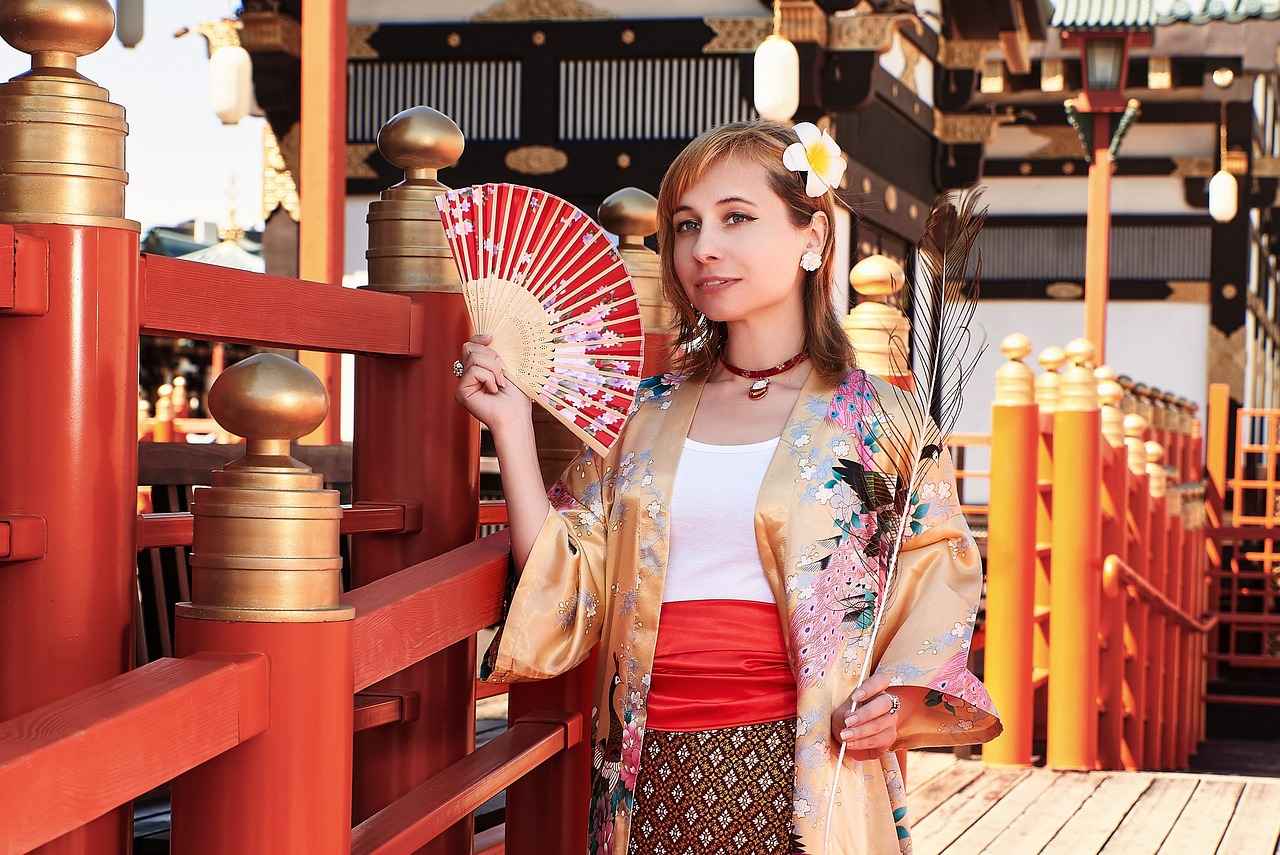
Cultural Significance of Kimono Fabrics
Kimono fabrics hold a deep cultural significance in Japan, representing not just clothing but a profound connection to the nation’s heritage and identity. These exquisite textiles are intricately woven into the fabric of Japanese life, playing vital roles in various ceremonies, festivals, and everyday occasions.
Historically, the kimono has been worn by individuals of all ages and backgrounds, serving as a symbol of status and tradition. The choice of fabric, color, and pattern often reflects the wearer’s social standing, personal taste, and even the season. For instance, during weddings, brides often wear elaborate silk kimonos adorned with intricate designs that represent good fortune and prosperity.
In addition to weddings, kimono fabrics are prominently featured in various Japanese festivals. Events like the Gion Matsuri in Kyoto showcase stunning kimonos, highlighting the artistry and craftsmanship of these textiles. Participants often wear kimonos that are specially designed for the occasion, enhancing the festive atmosphere and celebrating cultural pride.
Moreover, kimono fabrics are not solely reserved for special events. They are also worn in everyday life, particularly during traditional tea ceremonies or family gatherings. The act of wearing a kimono can be seen as a way to honor one’s heritage and maintain a connection to the past.
Today, the appreciation for kimono fabrics continues to evolve. While modern fashion trends have influenced their design, the essence of cultural identity remains intact. Many artisans are dedicated to preserving traditional techniques, ensuring that the beauty and significance of kimono fabrics are passed down through generations.
In conclusion, kimono fabrics are far more than mere clothing; they are a testament to Japan’s rich cultural tapestry, embodying history, artistry, and identity. Their ongoing relevance in both traditional and contemporary contexts underscores their importance in Japanese society.

Modern Trends in Kimono Fabrics
The world of kimono fabrics is experiencing a remarkable transformation, blending traditional craftsmanship with contemporary fashion trends. As designers and artisans innovate, they are reinterpreting the classic kimono, making it relevant for today’s style-conscious consumers. This section delves into the ways modern trends are reshaping kimono fabrics, highlighting innovative designs and materials.
- Fusion of Styles: Modern kimonos often incorporate elements from Western fashion, leading to unique hybrids. Designers are experimenting with silhouette alterations and layering techniques, making kimonos suitable for various occasions.
- Innovative Materials: While traditional silk remains a staple, newer fabrics such as eco-friendly blends and high-performance synthetics are gaining popularity. These materials provide durability and comfort, appealing to younger generations.
- Bold Patterns and Colors: Contemporary kimono designs embrace vibrant colors and striking patterns, moving away from the muted tones of the past. This shift reflects a desire for self-expression and individuality.
- Streetwear Influence: The rise of streetwear culture has influenced kimono styles, with oversized fits and casual aesthetics becoming prevalent. This trend makes kimonos accessible and appealing to a broader audience.
- Global Collaborations: International designers are collaborating with traditional Japanese artisans, resulting in a fusion of cultural aesthetics. Such partnerships celebrate heritage while pushing the boundaries of design.
As these trends continue to evolve, the kimono remains a symbol of cultural heritage while adapting to modern sensibilities. By embracing innovation, kimono fabrics are not only preserving tradition but also carving out a space in contemporary fashion.

How to Care for Kimono Fabrics
Proper care is essential to maintain the beauty and longevity of kimono fabrics. These exquisite garments, rich in history and craftsmanship, require special attention to ensure they remain in pristine condition. This section provides practical tips for cleaning and storing kimonos, helping to preserve their quality for generations to come.
To clean kimono fabrics, it is crucial to avoid harsh chemicals that can damage the delicate fibers. Instead, consider the following methods:
- Gentle Hand Washing: Use lukewarm water and a mild detergent specifically designed for delicate fabrics. Immerse the kimono and gently agitate the water to remove dirt.
- Spot Cleaning: For minor stains, apply a small amount of detergent directly to the affected area and gently dab with a soft cloth.
- Professional Cleaning: For valuable or heavily soiled kimonos, seeking the help of a professional cleaner who specializes in traditional garments is recommended.
After cleaning, proper drying techniques are essential. Always hang kimonos in a shaded area to avoid direct sunlight, which can cause fading. Never wring out the fabric, as this can distort its shape.
When it comes to storing kimonos, follow these guidelines:
- Use a Breathable Garment Bag: Store kimonos in a cotton or silk garment bag to protect them from dust and pests while allowing the fabric to breathe.
- Avoid Folding: If possible, roll the kimono instead of folding it to prevent creases and stress on the fabric.
- Climate Control: Keep kimonos in a cool, dry place, as humidity can lead to mold and mildew.
By following these care tips, you can ensure that your kimono fabrics maintain their beauty and cultural significance for years to come. Regular maintenance not only enhances their appearance but also preserves the rich heritage they represent.

Conclusion: The Timeless Appeal of Kimono Fabrics
In summary, kimono fabrics represent a profound aspect of Japan’s cultural identity, showcasing a remarkable blend of tradition and modernity. These fabrics are not merely materials used for clothing; they are woven narratives that encapsulate the essence of Japanese heritage. The meticulous craftsmanship involved in creating these fabrics, coupled with their stunning designs, ensures that they remain cherished not only within Japan but also around the world.
The art of kimono making has evolved over centuries, reflecting changes in society and fashion while still honoring the traditional techniques that have been passed down through generations. Each piece of fabric tells a story, whether it be through the choice of colors, patterns, or the type of material used. For instance, the luxurious feel of silk continues to be a favorite for formal occasions, while cotton is embraced for its practicality in everyday wear.
Moreover, the cultural significance of kimono fabrics cannot be overstated. They play a pivotal role in various ceremonies, festivals, and personal milestones, symbolizing not just beauty but also the values and traditions of Japanese society. As the world becomes increasingly globalized, the adaptability of kimono fabrics to contemporary fashion trends demonstrates their enduring appeal.
In conclusion, the unique qualities of kimono fabrics ensure their place as a beloved aspect of Japanese identity. They are a testament to the country’s rich cultural heritage, continuously inspiring admiration and respect both at home and abroad. As we move forward, it is essential to appreciate and preserve these fabrics, recognizing them as living pieces of art that connect us to the past while embracing the future.
Frequently Asked Questions
- What types of fabrics are commonly used in kimonos?
Kimonos are traditionally made from a variety of fabrics, with silk being the most revered for its luxurious feel. Other popular options include cotton for casual wear and synthentic blends that offer durability and affordability.
- How are kimono fabrics dyed?
The dyeing of kimono fabrics is an art form in itself. Techniques like yuzen and shibori are used to create intricate patterns, with yuzen being a detailed method that allows for stunning designs, while shibori involves tie-dye techniques that produce unique, one-of-a-kind looks.
- What is the significance of kimono fabrics in Japanese culture?
Kimono fabrics are more than just clothing; they are a representation of Japan’s rich cultural heritage. They play a vital role in ceremonies, festivals, and everyday life, embodying the identity and traditions of the Japanese people.
- How should I care for my kimono?
Proper care is essential for maintaining the beauty of kimono fabrics. Always store them in a cool, dry place, and when cleaning, consider professional services to preserve their quality and prevent damage.
- Are there modern trends in kimono fabrics?
Absolutely! Modern fashion has influenced kimono fabrics, leading to innovative designs and materials that blend traditional aesthetics with contemporary styles, making kimonos more accessible to a wider audience.






